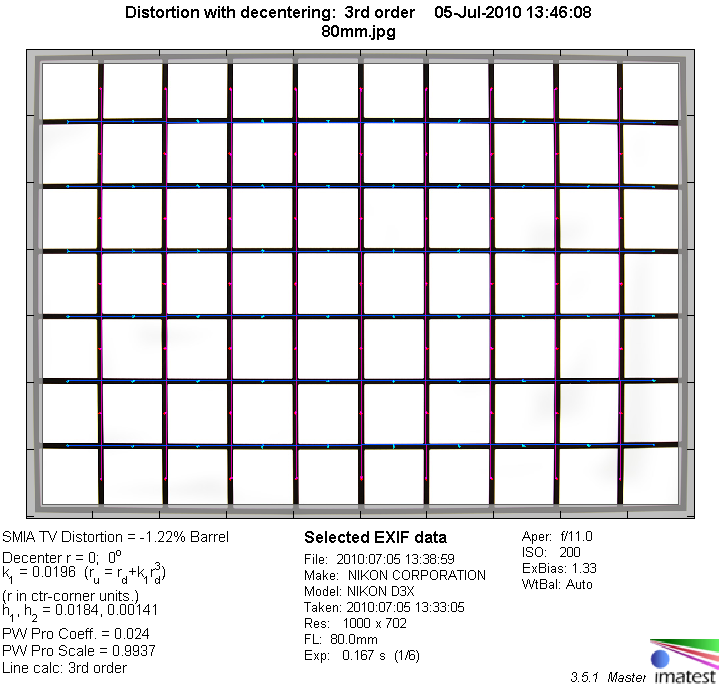|
Nikkor AF 80-400mm f/4.5-5.6 D ED VR (FX) - Review / Test Report - Analysis |
|
Lens Reviews -
Nikon / Nikkor (full format)
|
|
Page 2 of 3

Distortion
Typical for most zoom lenses in this range the 80-400 VR shows some barrel distortion at its shortest focal length, switching over to pincushion style distortion at 200mm and also for the rest of the focal range. At 400mm, the distortion is rather pronounced and can be disturbing for any subject with straight lines near the image borders. However, the good news is that distortion is uniform at any focal length setting and thus not too complicated to correct by software during image post processing.
|
Move the mouse cursor over the focal length text marks below to observe the respective distortion
|
| 80 mm |
200 mm |
300 mm |
400 mm |
|

|
The chart above has a real-world size of about 120x80cm.
Vignetting
The 80-400 VR is not an overly fast lens and consequently the amount of vignetting is rather low. Wide open light fall-off might be visible and an issue for really critical subjects, however stopping down helps to reduce the vignetting to an amount that's hardly field-relevant anymore.
We're performing our vignetting analysis based on
(uncorrected) JPEGs straight from the camera. The JPG engine of the Nikon D3x features a rather flat
gradation curve, thus has a moderate contrast characteristic, resulting in comparatively low vignetting figures - the
corresponding Canon figures are roughly 40% higher due to the more
aggressive default contrast setting.

MTF (resolution)
At its short end the lens delivers excellent sharpness in the image center and very good border and corner resolution. However, this is unfortunately where the good news end. The more you increase the focal length, the more the image resolution drops. At its longest focal length, the image center only just reaches very good resolution figures, while the borders are one school mark behind and the corners are very soft at any aperture setting.
Please note that the MTF results are not directly comparable across the different systems!
Below is a simplified summary of the formal findings. The chart shows line widths
per picture height (LW/PH) which can be taken as a measure for sharpness.
If you want to know more about the MTF50 figures you may check out the corresponding
Imatest Explanations

Chromatic Aberrations (CAs)
Chromatic aberrations (color shadows at harsh contrast transitions) are rather high, reaching an amount of almost 3 pixels. However, please note that lateral CAs can easily be corrected in software or by the camera itself (most modern Nikon DSLRs remove CAs on-the-fly if you shoot JPGs).

|